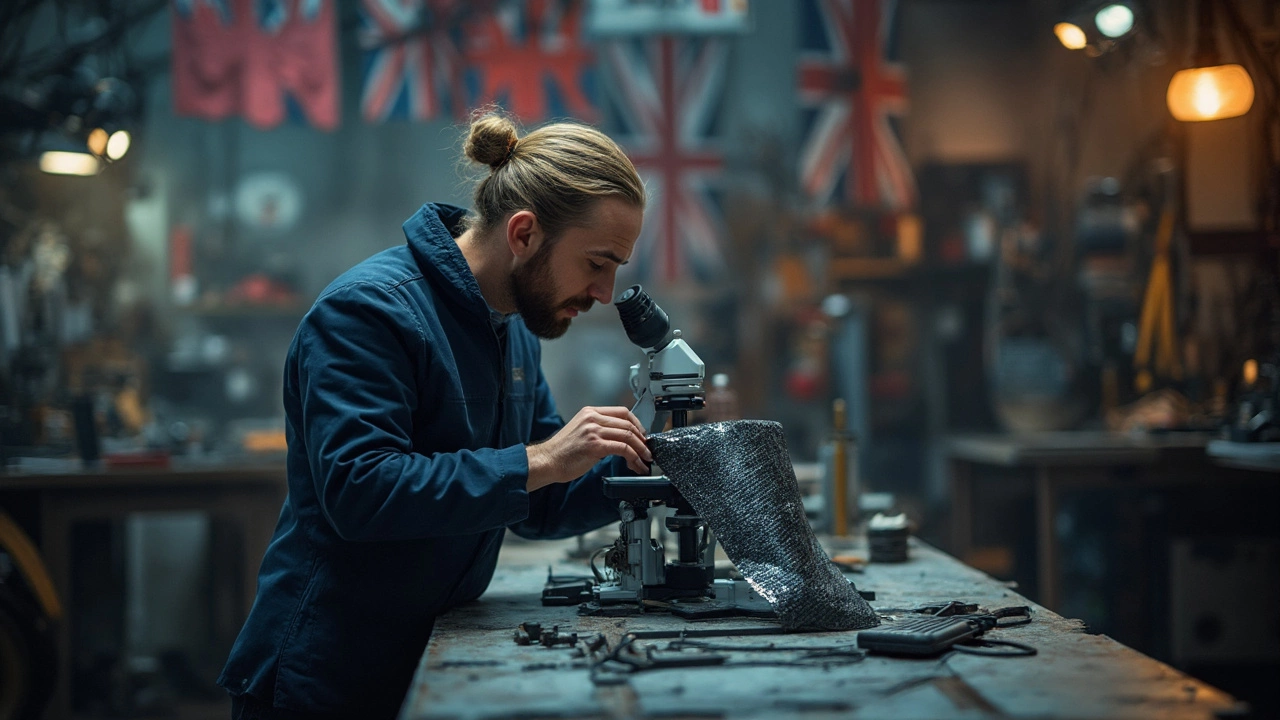So, you've got a sleek carbon fiber spoiler on your car, and you're wondering—will this bad boy stand the test of time? You're not alone. A lot of car enthusiasts ask this question, thinking about the long haul. Carbon fiber is often hailed for its super-hero-like strength and feathery weight. But nothing's invincible, right?
Let's get into what could affect how long your carbon fiber parts hold up. Unlike your old clunker in the backyard, carbon fiber won't just rust away. But elements like UV exposure and mechanical stress can slowly chip away at its integrity. Don't stress, though; understanding these factors can help you keep it in mint condition.
Understanding Carbon Fiber
Let's get up close and personal with carbon fiber. This material isn't just for high-end sports cars or James Bond gadgets. It's all about a mix of lightweight and strong, making it the go-to for things like spoilers. Imagine a spiderweb—super light but tough to break. That's carbon fiber in a nutshell.
Carbon fiber is made of thin, strong crystalline filaments of carbon. Sounds fancy, right? These filaments are woven into fabric and often layered into sheets, which are then bonded together with a resin. That's where we get those eye-catching weaves you see on cars.
Now, why is everyone using it? Well, it's incredibly strong yet much lighter than steel. Think of it like having the strength of the Hulk but still being able to do ballet. This makes it awesome for anything that moves fast and needs to be light as a feather but strong as iron.
Here's a little fun fact: the aerospace industry was one of the first massive adopters of carbon fiber back in the day. Why? Because who doesn't want a plane that's both strong and efficient?
Whether it's a spoiler on your ride or even your tennis racket, carbon fiber tends to show how tech and style can mesh perfectly. Understanding how it's made and why it works is key to appreciating its role in our cars and lives.
Factors Affecting Durability
Alright, let's talk about what could mess with the durability of your carbon fiber spoiler. Turns out, it's not just about looking cool; it's about keeping that cool look over time. So, what should you be watching out for?
First up, we've got the sun. Those UV rays are not your car's best friends. Extended exposure to sunlight can actually cause your carbon fiber to degrade, making it lose that shiny appeal. Think of it like your skin getting sunburned—without the sunscreen, it's gonna suffer. You might want to think about either parking indoors or using a protective cover, especially if your car's going to sit outside for long.
Now, let's chat about mechanical stress. Just like a worn-out pair of favorite sneakers, your carbon fiber parts can start to give under constant pressure and movement. If you're a fan of tight turns and rough roads, that spoiler's going to be under a lot of stress. That's where proper installation comes in handy. Make sure it's securely attached and check it now and then to see that nothing's coming loose.
Another one on the list is chemical exposure. Be careful with the cleaners and chemicals you use on your ride. Some harsh cleaners can damage the resin that holds the carbon fiber together. Stick to mild detergent or products specifically designed for automotive use.
And don’t forget temperature changes. Extreme temperature swings can impact materials that expand and contract, and while carbon fiber is sturdy, it's not completely immune.
Here's a quick table to sum up these factors and what you can do:
| Factor | Impact | Prevention Tips |
|---|---|---|
| UV Exposure | Color fading, material weakening | Use covers/park indoors |
| Mechanical Stress | Material fatigue | Ensure secure installation |
| Chemical Exposure | Resin damage | Use mild cleaners |
| Temperature Changes | Expansion/contraction | Avoid extreme temps when possible |
Keeping these tips in mind can help you maintain your carbon fiber spoiler's dude-cool factor over the long haul. So, what's your next move?

Signs of Deterioration
Figuring out if your carbon fiber is losing its mojo can be tricky. It's not like you'll wake up to find it has magically turned into a pumpkin. But there are signs of deterioration that you should keep an eye out for.
First up, look closely at your carbon fiber spoilers for any cracks or splits. This is often the biggest giveaway that something's up. The tiny fibers that make carbon fiber so strong can start to snap under too much pressure or impact, leading to visible damage. Noticed any discoloration? That's another red flag. Extended exposure to UV rays can cause yellowing or fading.
Sometimes, deterioration can sneak up on you in the form of delamination, where layers of the carbon fiber start to separate. Press gently around the edges. If it feels like layers are coming apart or you hear crunching sounds, that might be delamination. Luckily, this doesn’t happen overnight and usually results from prolonged stress or poor manufacturing.
Keep an ear out for squeaks and creaks that weren't there before. Weird sounds coming from your spoiler can signal it's under stress, especially if you've been pushing it a bit hard lately. Feel for any areas that have become soft or flexible—they should be stiff and rigorous.
If you're still not sure what's going on, there's no shame in calling in the pros. A professional can assess the situation, and might even use some fancy tools like an ultrasonic tester to check for internal damage you can't see.
Maintenance is a lot easier when you catch things early, so regular check-ups can help ensure your carbon fiber keeps doing its job.
Tips for Maintenance
Keeping your carbon fiber spoiler looking sharp and performing well isn't rocket science, but it does need a bit of regular attention. Think of it as giving your car a little TLC to keep it in the game. Wanna know the secrets? Here are some straightforward tips to help your spoiler last longer and stay as fresh as the day you got it.
First things first, regular cleaning is a must. Dust, dirt, and road gunk can dull the beautiful weave of carbon fiber. Use a gentle car wash soap, a microfiber cloth, and make sure to rinse thoroughly. Avoid abrasive sponges—they can scratch the surface, ruining that sleek look.
- UV Protection: Carbon fiber, while strong, can suffer from prolonged sun exposure. Applying a UV protectant spray can shield it from harmful rays, keeping its appearance crisp.
- Inspection: Occasionally check your spoiler for any signs of wear, cracks, or loose fittings. Catching these early means easier fixes and less stress down the road.
- Sealant Application: Consider using a clear coat or sealant to provide an extra layer of protection. This can help maintain its shine and guard against minor scratches.
Lastly, be mindful about where you park. Whenever possible, keep your car out of extreme weather, be it sun or snow. A garage or even a car cover can make a good difference.
These steps might seem like small efforts, but trust me, they pay off big time in keeping your beloved spoiler in top shape. Not only will it look better on the road, but you'll also maintain its resale value, which is always a win.




